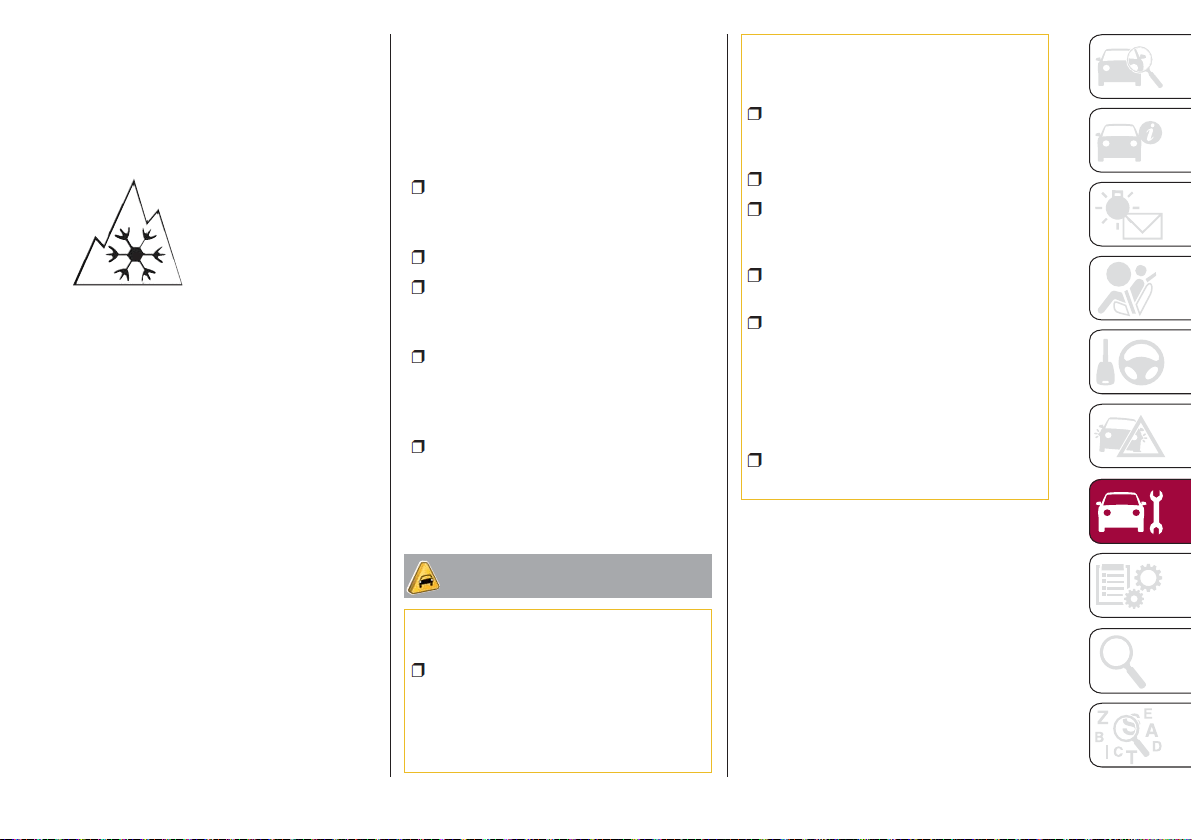Loading ...
Loading ...
Loading ...

Snow Tires
Some areas of the country require the
use of snow tires during the Winter. Snow
tires can be identified by a
“mountain/snowflake” symbol on the tire
sidewall.
If you need snow tires,
select tires equivalent
in size and type to the
original equipment
tires. Use snow tires
only in sets of four;
failure to do so may
adversely affect the safety and handling
of your vehicle.
Snow tires generally have lower speed
ratings than what was originally equipped
with your vehicle and should not be
operated at sustained speeds over
75 mph (120 km/h). For speeds above
75 mph (120 km/h) refer to original
equipment or an authorized tire dealer
for recommended safe operating speeds,
loading and cold tire inflation pressures.
While studded tires improve
performance on ice, skid and traction
capability on wet or dry surfaces may be
poorer than that of non-studded tires.
Some states prohibit studded tires;
therefore, local laws should be checked
before using these tire types.
Tire Chains (Traction Devices)
Use of traction devices require sufficient
tire-to-body clearance. Follow these
recommendations to guard against
damage.
Note:
Traction device must be of proper
size for the tire, as recommended by the
traction device manufacturer
Use on Rear Tires Only
Due to limited clearance, the
following traction devices are
recommended:
For a 255/35R19 tire, use of a snow
traction device with a maximum
projection of 7 mm beyond the tire
profile is recommended.
For 225/50R17, 225/45R18 or
225/40R19 tires, use of a snow traction
device with a maximum projection of
9 mm beyond the tire profile is
recommended.
Caution!
To avoid damage to your vehicle or tires,
observe the following precautions:
Because of restricted traction device
clearance between tires and other
suspension components, it is important that
only traction devices in good condition are
used. Broken devices can cause serious
damage. Stop the vehicle immediately if
noise occurs that could indicate device
breakage. Remove the damaged parts of
the device before further use.
Install device as tightly as possible and
then retighten after driving about ½ mile
(0.8 km).
Do not exceed 30 mph (48 km/h).
Drive cautiously and avoid severe turns
and large bumps, especially with a loaded
vehicle.
Do not drive for a prolonged period on dry
pavement.
Observe the traction device
manufacturer’s instructions on the method
of installation, operating speed, and
conditions for use. Always use the
suggested operating speed of the device
manufacturer’s if it is less than 30 mph
(48 km/h).
Do not use traction devices on a compact
spare tire.
Tire Rotation Recommendations
Tires on the front and rear axles of
vehicles operate at different loads and
perform different steering, driving, and
braking functions. For these reasons,
they wear at unequal rates. These effects
can be reduced by timely rotation of
tires. Rotation will increase tread life,
maintain traction levels and contribute to
a smooth, quiet ride.
To resolve this problem, tires should be
rotated at each service interval
221
Loading ...
Loading ...
Loading ...